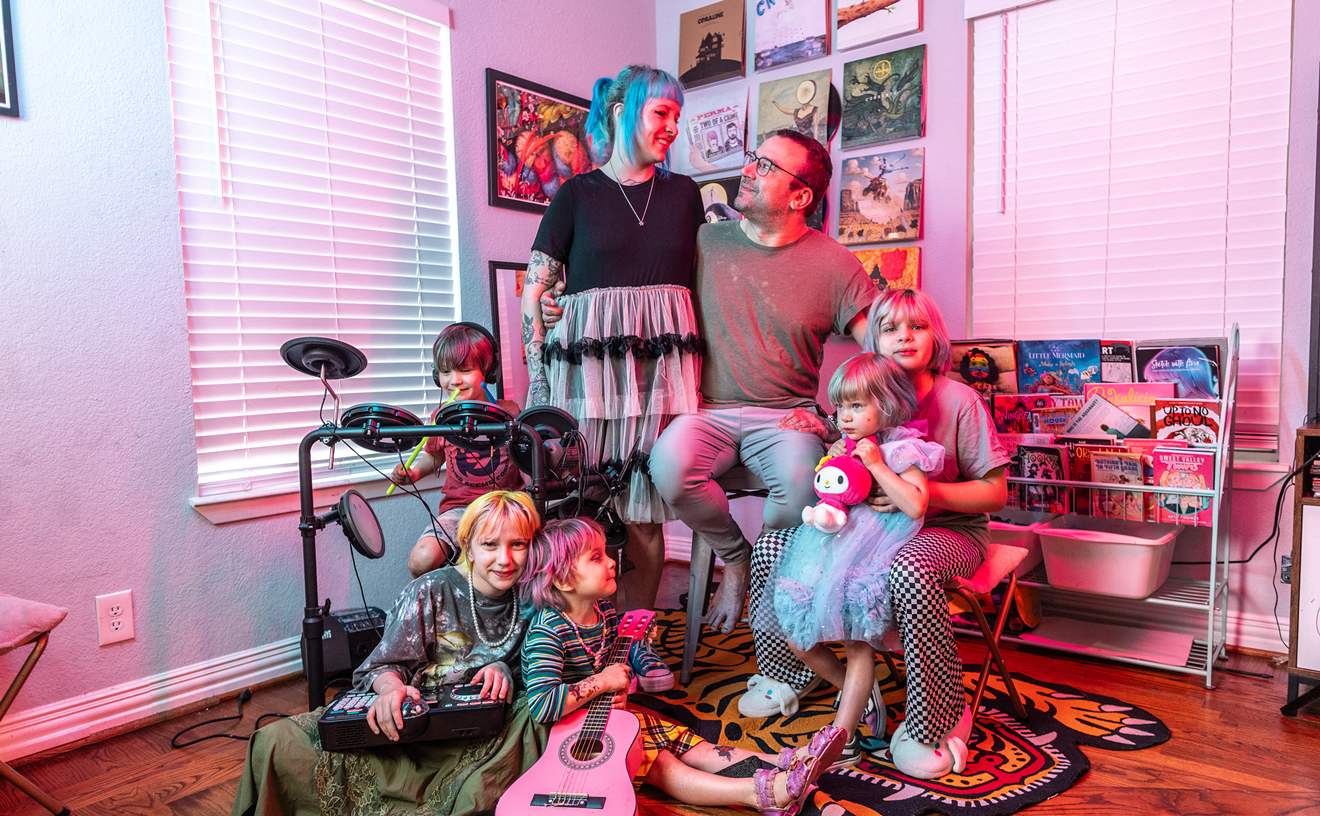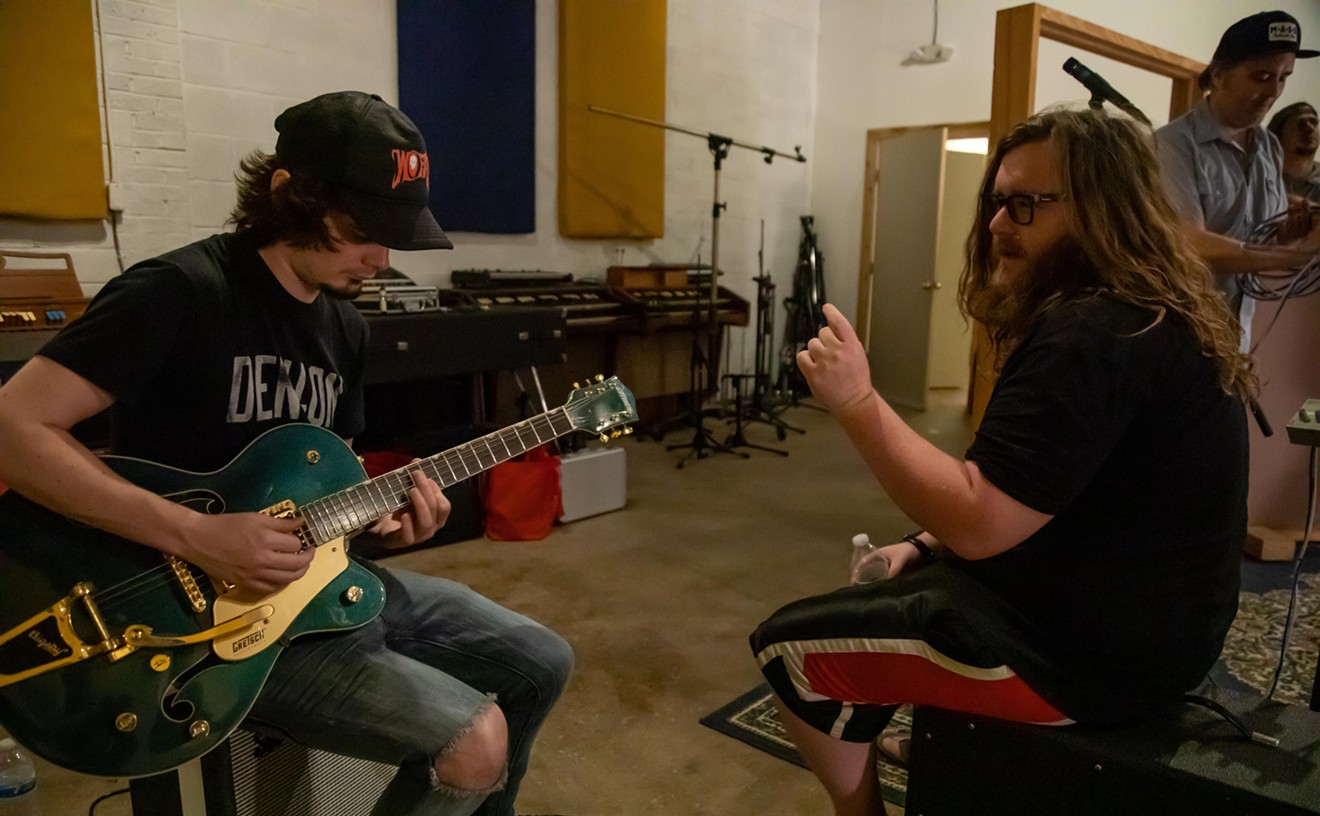Since Hart Ward penned his classic "Dallas Blues" in 1912, the city has established a proud tradition in the blues genre with its performers, venues and documentarians. Today, Dallas' blues legacy remains in the hands of a smaller number of people than it has in years past. But some, like Wanda King, daughter of late blues legend Freddie King, Don O of KNON-FM 89.3 blues radio fame and Pat Bywaters, grandson of famed Dallas Nine member Jerry Bywaters, are trying to honor the city's contribution to the blues -- a contribution that seems to be better known worldwide than it is here at home.
See also: How R.L.'s Blues Palace survived Dallas' blues club crash
Honoring the Godfather: Wanda King
Growing up in a household with an iconic blues legend like Freddie King as a father would seem like a daunting experience. "He was just a regular dad," says Wanda King of her father - the godfather of Dallas blues. "He, of course ... well, he wasn't a regular dad, but he did regular stuff like a dad."
Some of the things that made him not a regular dad: having blues legends like Albert King coming over for Sunday dinner, or playing guitar with Steve Miller in the living room. "Things like that are normal in a musician's family," Wanda says, "but I knew my father was famous early on ... someone special."
Freddie King was so special that he has influenced nearly every blues musician since the late '60s and early '70s, and his daughter Wanda feels that it's time Dallas honors its blues legends with not just a statue but a museum filled with memorabilia from Texas blues icons like Stevie Ray and Jimmie Vaughan, Johnny "Guitar" Watson and, of course, Freddie King.
A few years ago, Wanda met with representatives from the city of Dallas, suggesting the city create a blues amusement park. She was going to pay for the statue of her father, but she wanted the city to represent the other Dallas bluesmen.
The city representatives instead offered to wrap a banner representing the state's blues artists around some pillars at the State Fair. "I thought it was kind of cheesy," Wanda says. "I wanted something that truly felt like Dallas was truly representing the music and the talent from this area, but sometimes the more current generation, they put things on the back burner."
To honor her father's legacy, Wanda petitioned the Rock and Roll Hall of Fame to induct him. And with a little help from Eric Clapton, in 2012, her father name's appeared on the ballot, and he was voted in on the first run. "I'm in the process right now donating his Gibson 335 sunburst," explains Wanda. "I know his things will be on display long after I'm gone and younger generations will have access to them. His thing was always trying to support young musicians, to encourage them to follow their dreams. 'If this is what you like, then do it,' he'd say. 'If you want to play the blues, play the blues; you just got to feel it, though. You gotta have a feel for it.'"
Tuned Into the Blues: Don O
"You know the city of Dallas has never recognized our musical culture as being an important contribution," says Don O, a DJ who's been spinning blues records for more than 30 years at KNON. "They are more interested in what the politicians are doing, or what the businesses are doing, and other than building like gigantic bridges and putting the names of very rich people on them and building art museums and buying art from all over the world to fill it with ... well, there's just not much recognition of the music history and the impact it has had worldwide."
After Robert Johnson slipped into Dallas and recorded his myth-making record Hell Hound on His Trail, Dallas blues artists have risen through the ranks of poverty to share their sorrow, their pain. From Blind Lemon Jefferson, the very first commercially successful bluesman, to T-Bone Walker, who influenced B.B. King who, in turn, spurred Freddie King to pick up a guitar and start singing the blues, this city has such a rich music history that no other Texas city can compare.
"To this day, you can't go to a blues jam without hearing someone doing 'Hide Away' or one of Freddie's other great instrumental hits," says Don O. "It's stuff guitar players cut their teeth on. If you're into blues guitar, you pretty much have to start with Freddie King."
Dallas blues artists have been influencing people for so long that fans from all over the world travel here to visit Stevie Ray Vaughn's and Freddie King's graves and the places where they played. People from as far away as Vienna, Austria, have even moved to the area "because of the blues scene, its history," says Don O. "That we don't recognize that is crazy." Don O claims this is one of the worst periods for blues artists. More than a 100 of them live in North Texas, and some of them are the top blues bands in the country. Sadly, KNON is the only radio station in town that knows they exist. "We're part of the support mechanism, but we wish there were more."
Although places like R.L. Blues Palace #2, the Pub in Frisco, where Jimmy Wallace's Guitar Army plays on Sunday nights, and the House of Blues are honoring the Dallas blues scene, crowds are minimal at best.
"Austin uses its music scene," explains Don O. "They acknowledge it. They support it. The press strongly supports it. That's why people like Stevie Ray Vaughan left Dallas." And that's probably why Austin has a statue of the legendary guitar slinger and Dallas doesn't.
Although he hopes city leaders will one day pay homage to the city's blues history, Don O plans to continue spending every Friday evening honoring blues legends in his own way: by playing their records for a new generation of listeners.
Mecca of the Blues: 508 Park Ave and Pat Bywater
In the early '30s, when Robert Johnson ended up at 508 Park Avenue to record his last album before the Devil appeared to collect his due, the old bluesman probably didn't realize that the address would later be seared into the minds of blues aficionados who've been traveling from across the world to see the abandoned structure. Today, they find the city's homeless population lingering on the street corners and in the alleyways.
For years, blues fans were wondering if the city would ever purchase the dilapidated structure and turn it into a museum for blues artists. Yet nothing ever happened, and the structure continued to deteriorate until, in June 2011, the First Presbyterian Church purchased the building and began developing plans to turn the structure into the Museum of Street Culture, which will include information about the blues scene in Dallas, turning the recording studio into an exhibit that connects blues musicians like Johnson to the social dislocation many of today's homeless face on a daily basis.
"The idea behind the museum is to draw a parallel between how music and art influence people on the street," explains Pat Bywater. "Robert Johnson would have probably been homeless, and we wanted to draw some parallels to that."
See also: Photo Tour: 508 Park Ave and Its Downtown Dallas Neighbors
Pat was born and raised in Dallas, and generations of his family have lived here. His grandfather Jerry Bywaters was a guiding force behind 20th century art in Texas, a faculty member at SMU for more than 40 years and director of the Dallas Museum of Art. Over the years, Pat has watched monument after monument in Dallas disappear as the city demolished the buildings to make room for "progress." "It just kills me to see," he says. "The city has lost too much of its soul."
In the early '90s, Pat drove his wife, whom he was dating at the time, by 508 Park Avenue and thought, Man, somebody's got to save this building. The building itself represents one of the best examples of Zig Zag Moderne architecture in Dallas. So, when Pat heard that his church had purchased the building, he got involved with the project and began purchasing old blues and rock memorabilia to put on display in 508's Museum of Street Culture.
The soon-to-be remodeled 508 Park Avenue will offer listening booths for people to hear some of the music from the 800 albums recorded at the historic building, a recording studio on the third floor for contemporary artists and an outside amphitheater and an art exhibit in the downstairs lobby.
And while he's hoping one day to offer a Freddie King or T-Bone Walker exhibit, the church's main mission for 508 Park Avenue is "to give a jewel to this corner of downtown and a jewel back to the city of Dallas," says Pat, "and hopefully change some folks' minds about homeless people."











